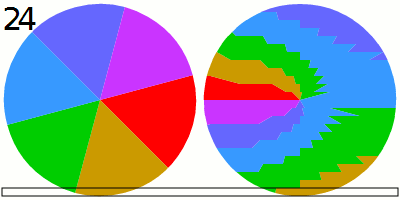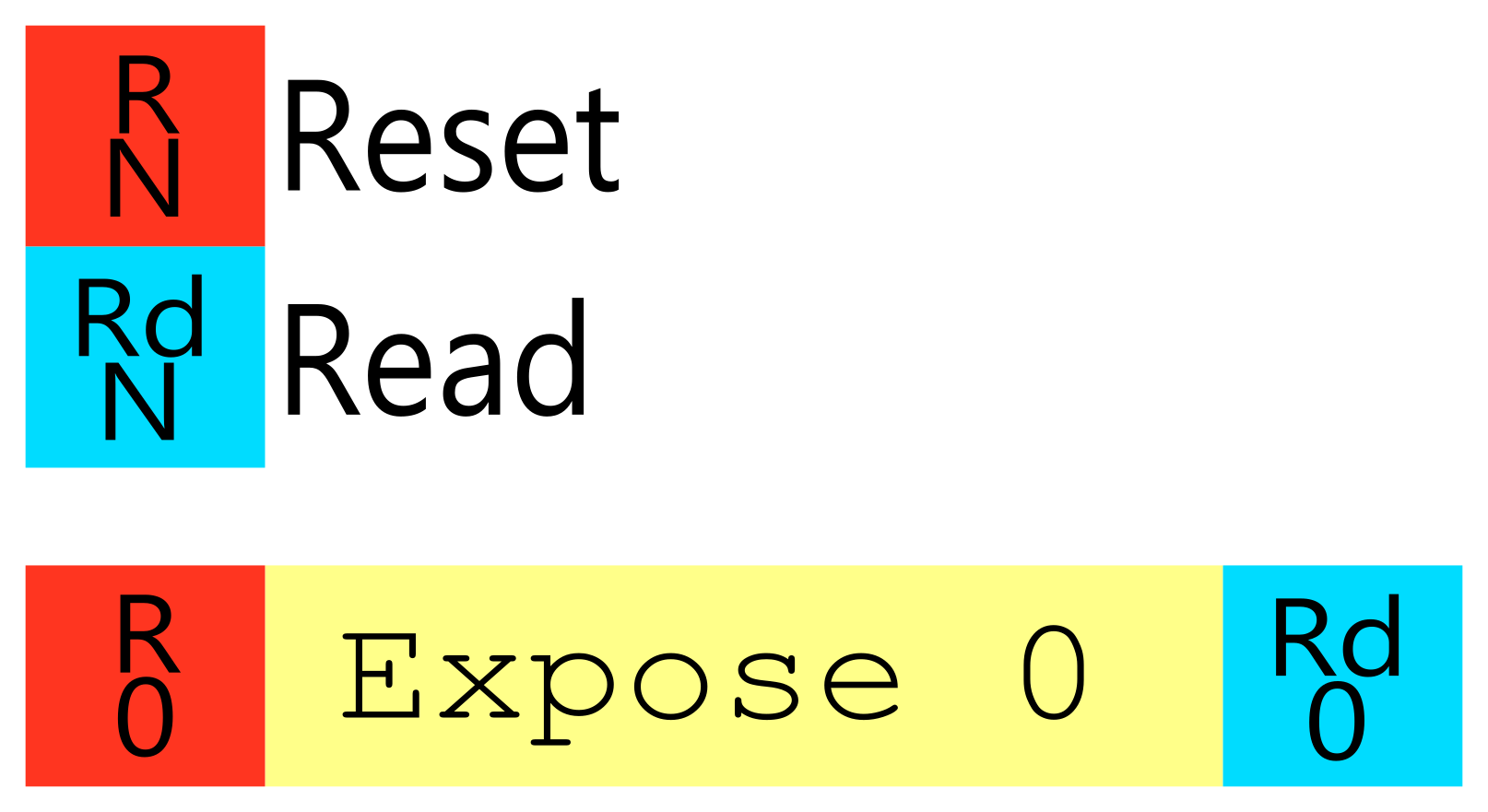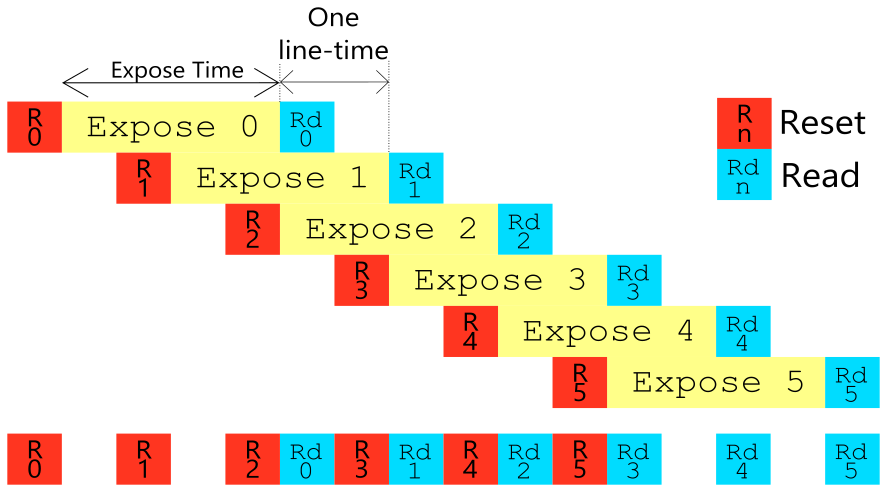
Figure 2. Rolling Shutter Sequence
In a rolling shutter imager, the pixels in the array are always exposed to light unless physically blocked by a shutter mechanism.
A single row within the sensor consists of a three step sequence, as shown in Figure 1.
Exposure causes charge to accumulate at each pixel in proportion to the incident light. The pixels’ accumulated charge must be removed prior to exposure to assure the user-defined exposure start time and duration are met.
Rolling Shutter Overview
Figure 1. Single Row Sequence

Finger Lakes Instrumentation
200 Tech Park Drive
Rochester NY 14623 USA
200 Tech Park Drive
Rochester NY 14623 USA
Phone: 585-624-3760
Email: sales@flicamera.com
Web: https://flicamera.com
Email: sales@flicamera.com
Web: https://flicamera.com
©2024 Finger Lakes Instrumentation
Since the time between read commands is the same as the time between reset commands one is able to expose all rows of the imager for the same amount of time, however, the time of the exposure is shifted from the first row for each subsequent row. A more comprehensive depiction of the sensor’s activity is shown below with each row resetting, exposing and reading.
One line time consist of a read and reset. In LDR mode it is 10.26 usec and in HDR mode it is 20.52 usec. Thus, there is a time delay every 10.26 usec or 20.52 usec due to the overlap of the row sequences.
When the sensor is not actively collecting information from the rows, such as in an idle mode, the sensor continues its process of reading and resetting. However, it reads a "non-imaging row" for each row it resets. This process keeps the sensor ready to capture an image with minimal delay while not wasting resources collecting unwanted row data. This action is referred to as flushing.
An unfortunate consequence of rolling shutter photography is that is often fails to accurately capture objects moving quickly due to the difference in start time of each rows exposure. An effect may occur where the moving object may look oblong, or, in the case of this spinning colour wheel (Figure 3), the object may distort into odd patterns.
One line time consist of a read and reset. In LDR mode it is 10.26 usec and in HDR mode it is 20.52 usec. Thus, there is a time delay every 10.26 usec or 20.52 usec due to the overlap of the row sequences.
When the sensor is not actively collecting information from the rows, such as in an idle mode, the sensor continues its process of reading and resetting. However, it reads a "non-imaging row" for each row it resets. This process keeps the sensor ready to capture an image with minimal delay while not wasting resources collecting unwanted row data. This action is referred to as flushing.
An unfortunate consequence of rolling shutter photography is that is often fails to accurately capture objects moving quickly due to the difference in start time of each rows exposure. An effect may occur where the moving object may look oblong, or, in the case of this spinning colour wheel (Figure 3), the object may distort into odd patterns.

This unfortunate sideaffect only appears when the object moves fast enough as to move a significant distance in the time it takes for the sensor to complete a single exposure-read-reset cycle. Results like this disc are uncommon, unless the object moves very quick like a propeller.
Figure 3: Rolling Shutter Color Wheel
Image Credit: Cmglee, wikimedia.org
Image Credit: Cmglee, wikimedia.org


The accumulated charge is removed when a reset occurs (also referred to as a flush or a clear). Pixels are reset and read one row at a time, not individually or globally.
After requesting an image capture, the camera waits, if set for a delay time, then resets the first row of the image. Immediately following each rows reset, exposure begins for that row, for the requested length of time. When the exposure has completed, the camera issues a read command for that row.
Once the first rows exposure begins, the following row begins its process. The result is a staggering of the start of exposure for the rows in the array. This staggered reset and read timing is referred to as a “rolling shutter exposure,” or simply “rolling exposure,” as there is no associated physical shutter. The graphic below depicts this concept. (Figure 2)
After requesting an image capture, the camera waits, if set for a delay time, then resets the first row of the image. Immediately following each rows reset, exposure begins for that row, for the requested length of time. When the exposure has completed, the camera issues a read command for that row.
Once the first rows exposure begins, the following row begins its process. The result is a staggering of the start of exposure for the rows in the array. This staggered reset and read timing is referred to as a “rolling shutter exposure,” or simply “rolling exposure,” as there is no associated physical shutter. The graphic below depicts this concept. (Figure 2)
